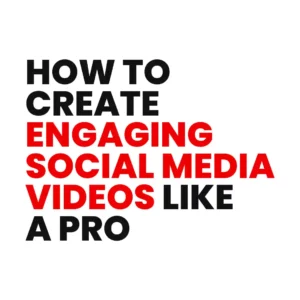In a world where websites compete for your attention, a new technique makes your online experience more personalized, engaging, and tailored to your tastes. Website personalization is more than a buzzword—it puts you at the centre of the virtual world.
Website personalization is controlled by the algorithms and technologies fueling everyday visits. Every interaction on a page allows the website to learn about you, anticipate your requirements, and provide content that matches your interests. Imagine a shopping site that recommends things, a news portal that delivers articles on your interests, and an entertainment platform that recommends shows based on your viewing habits. This is happening now and changing how you traverse the digital world.

What is website personalization?
Website personalization involves customizing a website’s content and interactions to your preferences. It’s why different people view different stuff on the same webpage. An e-commerce platform, news site, or streaming service aims to make you feel that the digital experience was designed for you. More than just intelligent algorithms, it’s a delicate ballet between technology and your personality.
3 types of website personalization
- Content personalization: Think about your last news or blog visit. Did you notice that the headlines and articles seemed tailored to your interests? This is content personalization. Websites can show you relevant content by knowing your browsing history, location, and interactions. The content you see is designed to grab your attention, whether you’re interested in tech, fashion, or politics.
- Product recommendations: Product recommendations make online shopping more fun. Have you visited an e-commerce site and been met with a list of products that look customized for you? The magic of product recommendation engines. These algorithms use your prior purchases, search history, and demographics to recommend things you’ll enjoy. Like having a personal shopper who knows your style.
- Dynamic user interfaces: Websites with dynamic user interfaces modify their layout and design based on your surfing behaviour. Dynamic user interface customization. Websites adjust their appearance to improve navigation. To make finding things easy, buttons, menus, and colour schemes may change—digital transformation tailored to your habits and behaviours.
5 benefits of website personalization
Website personalization makes website interactions fascinating and fulfilling over the internet, where various websites compete for user attention. Below are 5 benefits of website personalization for website owners.
1. Enhanced user satisfaction and engagement
Imagine a website that knows your name, remembers your preferences, and recommends content you like. This personal care boosts user engagement and pleasure. When a website recognizes you as an individual, you’re more likely to explore a site’s offerings and capabilities. The website satisfies your every curiosity, making your experience intriguing and immersive.
2. Increased conversions and sales
Have you ever browsed an internet store and found things you like? Product recommendations and information that match your tastes improve the likelihood of buying. The website’s understanding of your demands inspires trust and confidence, pushing you to checkout. Finding what you want influences you to make a purchase.
3. Lower bounce rates and cart abandonment
Imagine landing on a website and being immediately lured in by relevant content. The magic of reduced bounce rates keeps consumers on a site longer. Have you ever put stuff in your online cart and regretted it? Website personalization helps reduce cart abandonment by providing personalized recommendations and a smooth user experience.
4. Building brand loyalty and trust
Trust is crucial in the modern world of possibilities. Personalization shows websites care about your preferences and wants. This promotes brand or platform loyalty. You’ll return if the content, products, or services continuously value you. Personalized relationships last, strengthening bonds beyond the digital realm.
5. Gathering user data for optimization
Every click and interaction leaves an invisible breadcrumb websites use to analyze your behaviour. The wealth of user data isn’t just for personalization; it helps websites improve their strategy. Websites may adapt to your changing demands by observing patterns, preferences, and trends. Your activities create a cycle of improvement that resonates with you in the digital world.
How to personalize your website effectively
You’re a dynamic participant as you navigate Nigeria’s huge digital ecosystem. Imagine a virtual environment with content and items that match your tastes. This is how website personalization works—a sophisticated dance of technology and understanding that customizes digital experiences. Let’s explore how this change happens and the steps to execute website personalization.
Data gathering and analysis
- Important user data collection: All clicks, scrolls, and interactions leave traces that shape your online persona. This data isn’t for surveillance; it’s to understand you. Websites may generate more meaningful experiences by learning about your preferences, behaviours, and needs.
- Ethical considerations and user privacy: Privacy concerns evolve with the digital landscape. Reputable websites recognize this and value your privacy. They follow stringent ethical principles to handle your data correctly and transparently. A delicate tango between personalization and privacy puts you in control.
- Tracking using cookies, user accounts, and more: Ever wondered how websites remember you? This involves cookies and user accounts. These features allow websites to recognize you across sessions for a seamless, personalized experience. No matter where you are online, it’s like returning home.
- Analyzing user behaviour and preferences: Your online behaviour reveals what you like, ignore, and click. Websites use this behaviour to map your preferences. Every action contributes to the website’s broader narrative to build your digital experiences, from articles you read to goods you try.
Read also: Custom Web Design Vs Templates
Strategies for segmentation
- Grouping users by demographics, behaviours, and preferences: The digital world is vast, and users vary. Segmentation groups people by age, geography, surfing history, and website preferences. This segmentation underpins personalized experiences.
- Creating user personas for targeted personalization: Imagine websites having a mental portrait of you that reflects your interests and behaviours. User personas help websites recognize your wants and create information and recommendations that match your digital identity.
- Applying rule-based and AI-driven segmentation: Segmentation is about providing pathways to personalized experiences, not merely splitting users. Rule-based approaches categorize users using predefined criteria, while AI-driven systems employ machine learning to find trends and forecasts. They complement each other to make your trip distinctive.
Content customization
- User-preference-based website content: Imagine a website that adapts to your tastes. This is achievable with content personalization. Websites may match headlines, graphics, and content to your interests by recognizing what you enjoy.
- Dynamic headlines, images, and CTAs: Have you noticed that some websites’ headlines and visuals change every time you visit? This dynamic change, backed by data and user preference, is a part of content personalization. It makes sure the content you see satisfies your needs.
- Content customization for user segments: Every reader and webpage segment is unique. Content customization is about adapting content to different user groups. The content you see is tailored to your interests, whether you like tech, fashion, or health.
Recommendation engines
Think of recommendation engines as digital matchmakers. They utilize your prior purchases, clicks, and engagements to anticipate what you would like next—having a virtual assistant who understands your tastes better than you.
- Collaborative filtering vs. Content-based recommendations: Recommendation engines come in two main flavors. Collaborative filtering looks at users’ similar preferences, while content-based recommendations focus on the characteristics of items you’ve shown interest in. Both methods work hand in hand to bring you remarkably spot-on suggestions.
- Related products, articles, or content: Have you ever visited an e-commerce website and seen a list of products “related” to the one you are looking at? Or related articles underneath a blog article (see this below). This is the advice being followed. Websites display products, articles, and content that match your interests, giving you a variety of possibilities.
How to overcome challenges with website personalization
Where every click leads to tailored content and personalized experiences, a challenge demands attention—a challenge that embodies the delicate balance between enhancing your digital journey and respecting your boundaries. As you navigate website customizing, you must recognize and overcome obstacles. Below are the challenges and ways to keep your personalized interactions enriching, respectful, and meaningful.
1. Balancing personalization and intrusion
Personalizing websites is a double-edged sword. It provides content and recommendations that match your choices. However, personalizing experiences might cross the line into privacy. It is vital to strike the appropriate balance. Websites strive to understand your comfort level with personalization and carefully balance improving your journey with invading your privacy.
2. Limited user exposure and filter bubble avoidance
Imagine only seeing content that supports your opinions and interests. The filter bubble is when algorithms keep you in your comfort zone. However, you must extend your horizons and challenge your assumptions. Websites recognize this difficulty and use ways to puncture these bubbles, exposing you to various content that enriches your worldview.
3. Inaccurate user data and its effects
Data isn’t always reliable in the ever-changing digital world. There may be inaccurate information about you. This can result in inaccurate suggestions and personalization. However, websites are constantly improving their methods, algorithms, and feedback. Your actions and interactions guide websites to better grasp your preferences.
4. Complex integration and technical issues
Website customization is complicated behind the scenes. Integrating data sources and making timely recommendations are technical issues. AI algorithms and dynamic content distribution necessitate a technological symphony. However, despite their technological complexity, websites invest in these technologies to improve your experience.
Read also: 7 Tips for Designing an E-commerce Website
4 real website personalization examples
Websites anticipate your needs and provide memorable experiences. Real-life instances of website personalization are changing how you interact with content, products, and services as you navigate this digital world. Amazon, Netflix, Spotify, and Airbnb have used personalization to make your online experiences unforgettable. These real-world website personalization examples guide you through Nigeria and beyond’s digital landscape. From shopping to entertainment, music to travel, websites are becoming friends that understand your requirements. These examples show the limitless possibility of website personalization, illustrating that the digital landscape is growing for you.
1. Amazon

Picture a market that understands your tastes better than a close friend. Amazon has mastered this technique, offering a curated selection of products that match your interests almost magically. Amazon’s recommendation engine analyses browsing history, purchasing trends, and cart items to propose books, electronics, fashion, and home decor. With this abundance of data, Amazon becomes your personal shopping guide, offering relevant and enjoyable selections.
2. Netflix

Think of a streaming service that knows what you want to watch before you do. Netflix uses your viewing history to recommend films and TV episodes. Netflix’s algorithm matches your mood with action-packed thrillers, sweet romances, and mind-bending mysteries every time you log in.
3. Spotify

This platform uses music to build playlists that evoke emotions and transport you. Spotify creates personalized playlists based on your listening habits, the music you enjoy, and the artists you follow. Their customized approach makes music discovery and familiarity fun, from ‘Discover Weekly’ playlists to ‘Daily Mixes’ that capture your mood.
4. Airbnb

Travel is about having an experience that suits your goals, not just a place to stay. Airbnb knows this, so its website customization goes beyond housing recommendations. The website matches your wanderlust with options based on your travel history, location interests, and experiences. Airbnb has options for every traveller, from mountain cabins to metropolitan lofts.
Conclusion
Website personalization influences your digital world, from purchase recommendations that seem like a close friend to entertainment ideas that match your mood. Make sure every click, scroll, and interaction meets the needs of website visitors. As a Nigerian web designer, I bring this transforming power to your digital doorway. Your virtual experience should be enriching, engaging, and unique. Let me help you create a dynamic website that serves your visitors’ needs and leads to more conversions.




